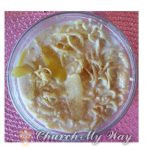Amalfi, Sigismondo Nastri talks about the traditions, rites and superstitions related to the feast of St. John the Baptist
We are on the eve of the solemnity of St. John the Baptist, whose festivity is linked to various traditions and beliefs that unite the sacred and the profane. The journalist from Amalfi Sigismondo Nastri reports to her in an interesting post published on his Facebook page: «The religious feast of St. John the Baptist, scheduled for tomorrow, June 24, merges – and is confused – with traditions, superstitions, esoteric practices. A Franciscan mmesca of sacred and profane that I find it hard to understand. I didn’t do it enough. Perhaps it is due to the fact that it happens on a particular day of the calendar, immediately after the summer solstice, when the heat becomes more intense. “Don’t stay if San Giovanni doesn’t come” declares an ancient proverb.
I think it is the solemnity in which ancient pagan beliefs related to the cycle of nature survive the most. I mention here only a few of them, he learned at the time of his childhood in Amalfi.
It was said that on the night between the 23rd and the 24th – that is, the next night, which is the shortest of the year -, a beam of fire (‘or beam’ and fire) to heat the water [come se non bastasse il caldo asfissiante che stiamo soffrendo in questi giorni].
I remember that, when I was a child, we looked forward to St. John’s Day because only then could we start swimming in the sea. Although forced to accept the suffering of the purge, the day before, with Magnesia San Pellegrino, to clean up the intestines. So they told us. We could not rebel. Otherwise we would not have been allowed to put our feet beyond the line of the shoreline.
Then there was the rite of lead, soft, ductile, malleable metal, which was placed in a saucepan (attention: not tin) and melted over the fire. Not difficult, considering that the melting takes place at a temperature of 328 degrees. After which he quickly poured it into a bucket of water and left it there until completely cooled. The metal, becoming solid again, assumed strange shapes to which we tried to give meaning. They even made horoscopes for the future. I tried it myself, a few times, in the teenage years. It was dangerous, you could get burned, but fun.
Another thing that comes to mind is the tradition of egg white put in water. In my house it was not done. Egg white was poured into a glass – a girl always had to do this – and put it on a window sill for the whole night. In the morning, from the form that the albumen had assumed – a bit like it happened with lead – the interested woman could draw auspices about her love future. If she found the water covered with bubbles, she meant that a handsome prince charming was on the home straight. Otherwise she had no choice but to arm herself with holy patience and wait for the following year.
On the night of San Giovanni, the walnuts – twenty-one, unripe, wet with dew, with green husks – were collected (they still do) to macerate in a liter of alcohol for the domestic production of nocillo
Finally, the sabba of the witches – le janare [dianare, seguaci di Diana] – under the majestic walnut of Benevento, located on the bank of the river Sabato. Place of spells, of esoteric rites. They came from everywhere, and in all weather conditions, even “under the water and under ‘o viento, under every maletiempo”, after having greased themselves with a herbal ointment, flying astride the handle of a broom of sorghum. Their motto – palindrome, also legible in reverse – was: “IN GIRUM IMUS NOCTE ET CONSUMIMUR IGNI” (We go around at night and consume ourselves in the fire).
Famous, on the Amalfi coast, are those of Conca dei Marini and it seems that they went there. Called back by the ghosts of Herodias and Salome, two cruel women, guilty of having killed the Baptist, the one who announced the coming of Christ: and for this – to atone for their guilt – forced to wander around the world, laden with chains. The story of the janaras intrigues me. The next night I’ll be looking out on the balcony, waiting for some to pass. Maybe she’ll be pretty too, I don’t think all witches are ugly. “




